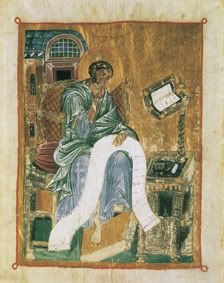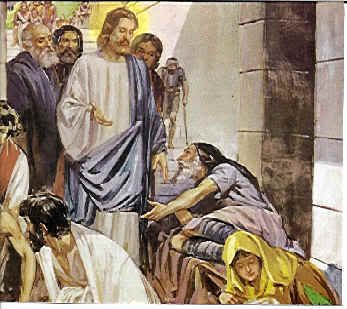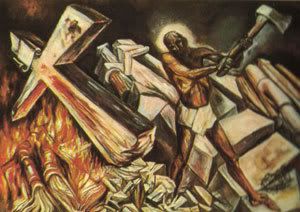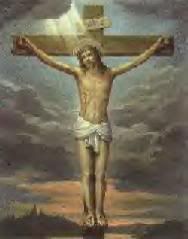Since the last post ("Richard Carrier's Standard for Historical proof") was about Carrier's use of Bayes on Jesus myth theory, I thought I would argue here that we have plenty of reason to set the prior high. In other words, to do Bayes you start with a prior probability then refine it as new information comes in. Like an artillery gunner finding his range. If you start with a higher prior then the probability you wind up with will be high. So there's reason to start with a high prior probability for Jesus existence. One such reason is the early date for Mark.
Most Jesus mythers and a lot of atheists take the old nineteenth century
view that Mark was written in the second century. They accept modern
scholarship when it ways Mark came first and Mat and Luke are dependent
upon him, then shed modern scholarship when it says (and the vast
majority do) that AD 70 was the Date for Mark.
I have argued that a new trend has emerged giving earlier dates for the Gospels. What do you suppose atheists said? I'm a liar of course! I will show that there is a much better basis for thinking of the gospel of Mark (I will just stick with Mark to makes things easier) as written before AD 70!
The major reason scholars put the date as 70 is the destruction of the temple. Mark records Jesus prediction that the temple would be destroyed. So most scholars today assume the naturalistic answer that they can't base dating on prophesy, so they have to put it after 70. It can't be much after 70 or it would cease to be very relevant. There are other and better reasons for putting around 70. That's the limit on how early they think it can be. they think it can't be latter than that becasue its too Jewish, the eschatology expectations doesn't match the second century.
there are good reasons to think Mark was written earlier than 70.
(1) The destruction of the temple does not have to be taken as a limit on the date. The problem is the basic assumption that no one expected the temple to be destroyed is wrong.
Jews of the first century had different expectations of the Messiah than do Jews today, or in subsequent centuries. Th view that has emerged from Qumran shows us that Jesus fit exactly what many Jews of the frist century expected. He doesn't fit the only profile but he does fit one profile that we know did exist, right down to the redemption. There was a view that saw Messiah as born, rejected by his people, executed, returns, and his death was redemption for the people.
Within that view they saw the temple's destruction connected with Messiah's birth. This is found in Yalkut the earliest volume of the Talmud, material from that segment goes back to the first century. This documented by Alfred Edersheim in Life and Times of Jesus the Messiah.
"Suffice it to say, according to the general opinion, the birth of the Messiah would be unknown to his contemporaries, that he would appear, carry on his work, than disappear--probably for 45 days, than appear again and destroy the hostile powers of the world..." (Edershiem, 436, Yalkut on Is. vol ii, )
So they already had the idea that the temple would be destoryed. If Jesus followers were expecting this, they would already be aware that since he had grown to manhood the destruction of the temple had to come soon. So they could have expected that before it happened, even by a couple of decades. This means the Evangelical apologetic loses a prophet fulfillment, but they have plenty of those to spare.
Other reasons for early date:
(1) The Jewish expectations of the Messiah are fit by Jesus in general and the view that fits him to a exactly is found at Qumran.
http://www.doxa.ws/Messiah/Messiah1.html
http://www.doxa.ws/Messiah/Fulfill.html
By the early second century this view was shifting away. Separation form the Gentile church, the bad blood that developed after the fall of the templ, the move away form the LXX and to their own translation that the Christians didn't use, made this view obsolete among Jews byt he early second century. Thus we can see the atmosphere and the Jewishness of Mark reflects an earlier period. It fits perfectly with the 30s, 40, 50s.
(2) The eschatology expectations fit the Jews of the first but not the second century. (see the links above)
The idea of the end times, the Messiah coming, the temple would be destoryed, this was all the sort of expectations they had int he time of Christ and even a bit before. But by the second century that gap with the Christians, the Jewish Christians didn't leave many writings from that period. The church was outgrowing those kind of eschatology by that time.
(3) different versions of Mark (used by Mat and Luke)
that means the date must be pushed back because you had to have time for different versions to develop.
Koester doesn't' argue for a complete UrMarkus ..as a more permeative version of the Gospel, but this evidence does suggest different versions of the same Gospel. While we can't find an UrMarkus, we can see clearly that the redactor who first formed the Gospel used several sources. The passion narrative has been mentioned, moreover, a miracle story source that is compatible with John, two written documents of saying sources are also recognizable. These include a collection of parables and one of apocalyptic material. (p.287)
But does this mean that Mark [the primary redactor] is merely a "cut and paste" which destorts previous sources and collects rumors and legends with no historical value? Where the skeptic sees this aspect, Koester does not. What Koester sees is a faithful copyist who has collected materials known to be of value to the community, and forged them into a certain order for the purposes of edification to the community.
As for a trend to early dating Errantskeptic. org* provides this list of both conservative and liberal scholars who are pushing toward earlier dates for Mark.
*Note: his list has been updated since I copied this so it's not the same. But it has even more on it showing the same things:
JAT Robinson is very liberal. He's one of the primary people in the early 60s who started the idea of levels to Q. Ray Brown was farily liberal, he was one instrumental in starting the trend to study non canonical gospels.
I have argued that a new trend has emerged giving earlier dates for the Gospels. What do you suppose atheists said? I'm a liar of course! I will show that there is a much better basis for thinking of the gospel of Mark (I will just stick with Mark to makes things easier) as written before AD 70!
The major reason scholars put the date as 70 is the destruction of the temple. Mark records Jesus prediction that the temple would be destroyed. So most scholars today assume the naturalistic answer that they can't base dating on prophesy, so they have to put it after 70. It can't be much after 70 or it would cease to be very relevant. There are other and better reasons for putting around 70. That's the limit on how early they think it can be. they think it can't be latter than that becasue its too Jewish, the eschatology expectations doesn't match the second century.
there are good reasons to think Mark was written earlier than 70.
(1) The destruction of the temple does not have to be taken as a limit on the date. The problem is the basic assumption that no one expected the temple to be destroyed is wrong.
Jews of the first century had different expectations of the Messiah than do Jews today, or in subsequent centuries. Th view that has emerged from Qumran shows us that Jesus fit exactly what many Jews of the frist century expected. He doesn't fit the only profile but he does fit one profile that we know did exist, right down to the redemption. There was a view that saw Messiah as born, rejected by his people, executed, returns, and his death was redemption for the people.
Within that view they saw the temple's destruction connected with Messiah's birth. This is found in Yalkut the earliest volume of the Talmud, material from that segment goes back to the first century. This documented by Alfred Edersheim in Life and Times of Jesus the Messiah.
"Suffice it to say, according to the general opinion, the birth of the Messiah would be unknown to his contemporaries, that he would appear, carry on his work, than disappear--probably for 45 days, than appear again and destroy the hostile powers of the world..." (Edershiem, 436, Yalkut on Is. vol ii, )
"[Messiah]...his birth is connnected with the destruction, [of temple] and his Return with the restoration of the temple" (on Lamintations i.16 WArsh p 64 in Edersheim "He might be there and be known or the might come and be again hidden for a time" comp Sanhedirin 97a Midrash on CAnt.
So they already had the idea that the temple would be destoryed. If Jesus followers were expecting this, they would already be aware that since he had grown to manhood the destruction of the temple had to come soon. So they could have expected that before it happened, even by a couple of decades. This means the Evangelical apologetic loses a prophet fulfillment, but they have plenty of those to spare.
Other reasons for early date:
(1) The Jewish expectations of the Messiah are fit by Jesus in general and the view that fits him to a exactly is found at Qumran.
http://www.doxa.ws/Messiah/Messiah1.html
http://www.doxa.ws/Messiah/Fulfill.html
By the early second century this view was shifting away. Separation form the Gentile church, the bad blood that developed after the fall of the templ, the move away form the LXX and to their own translation that the Christians didn't use, made this view obsolete among Jews byt he early second century. Thus we can see the atmosphere and the Jewishness of Mark reflects an earlier period. It fits perfectly with the 30s, 40, 50s.
(2) The eschatology expectations fit the Jews of the first but not the second century. (see the links above)
The idea of the end times, the Messiah coming, the temple would be destoryed, this was all the sort of expectations they had int he time of Christ and even a bit before. But by the second century that gap with the Christians, the Jewish Christians didn't leave many writings from that period. The church was outgrowing those kind of eschatology by that time.
(3) different versions of Mark (used by Mat and Luke)
that means the date must be pushed back because you had to have time for different versions to develop.
"External evidence for two different versions of Mark circulating at an early date can be derived only from the observation that Luke does not reproduce the section Mark 6:45-8:26. Luke 19: 19= Mark 8:27 follows directly upon Luke 9:17= Mark 6:44. Luke may have used a copy of Mark that had accidentally lost a few pages. However there are some special features which differentiate this particular from the rest of Mark's Gospel. It begins with Jesus going to Bethsaida (Mark 6:45) and ends with the healing of a blind man from Bethsaida (Mark 8:22). Thereafter Jesus goes to Cesaria Philippi and the town of Bethsaida never occurs again the Gospel. This section is also of a number of other doublets of Markan pericopes. 6:44-54 the walking on the water is a variant of the stilling of the tempest (Mark 4:35-41). 8:1-10 the feeding of the 4000 is a secondary elaboration of the feeding of the 5000 (Mark 6:30-44)...The cumulative evidence of these peculiarities may allow the conclusion that an earlier version of Mark, which was used by Luke did not yet contain the Besiada section (Mark 6:45-8:26) whereas Matthew knew the expanded version which must have come into existence very soon after the original composition of the original gospel." (Koester, 285)."
Koester doesn't' argue for a complete UrMarkus ..as a more permeative version of the Gospel, but this evidence does suggest different versions of the same Gospel. While we can't find an UrMarkus, we can see clearly that the redactor who first formed the Gospel used several sources. The passion narrative has been mentioned, moreover, a miracle story source that is compatible with John, two written documents of saying sources are also recognizable. These include a collection of parables and one of apocalyptic material. (p.287)
But does this mean that Mark [the primary redactor] is merely a "cut and paste" which destorts previous sources and collects rumors and legends with no historical value? Where the skeptic sees this aspect, Koester does not. What Koester sees is a faithful copyist who has collected materials known to be of value to the community, and forged them into a certain order for the purposes of edification to the community.
"Mark [the primary redactor] is primarily a faithful collector. In so far as he is also an author he has created an overriding general framework for the incorporation of traditional material but he has still left most of his material intact.His Gospel is therefore a most important witness for an early stage for the formative development of the traditions about Jesus. The world which these traditions describe rarely goes beyond Galilee, Judea and Jerusalem, which is not the world of the author [primary redactor] or the readers for whom the book was intended. Mark's information about Palestine and its people is fairly accurate whenever he leaves his sources intact. But from his redaction of the sources it is clear that the author is not a Jewish Chrstistian and that he does not live in Palestine." (Koester p.289)
As for a trend to early dating Errantskeptic. org* provides this list of both conservative and liberal scholars who are pushing toward earlier dates for Mark.
*Note: his list has been updated since I copied this so it's not the same. But it has even more on it showing the same things:
Mark
Believer's Study Bible, A.D. 65 to 68
Allan Black, Ph.D. early AD 60's
Raymond E. Brown, Ph.D. AD 60 to 75, most likely between AD 68 & 73
F.F. Bruce, Ph.D. AD 64 or 65
D.A. Carson, R.T. France, and G.J. Wenham, eds. New Bible Commentary: 21 Century Edition, 60 to 70 CE
M. G. Easton M. A., D. D. Probably about AD 63
James M. Efird, Ph.D. AD 65 to 70
David A. Fiensy, Ph.D. AD 66 or 67
Joseph A. Fitzmyer, Ph.D. AD 60 to 70
Robert A. Guelich, Ph.D. AD 67 to 70
Donald Guthrie, Ph.D. New Testament Introduction, 65 to 70 CE
William Hendriksen, Ph.D. AD 40 to 65, with the earlier date favored.
Martin Hengel, Ph.D. AD 69
A.E. Hill, Ph.D. AD 50 to 70
R. Jamieson, A.R. Fausset, and D. Brown, eds. AD 54 to 68
Howard Clark Kee, Ph.D. AD 70
Craig S. Keener, Ph.D. AD 64
Werner Georg Kummel, Ph.D. AD 70
William L. Lane, Th.D. AD 60 to 70
John MacArthur, Ph.D. AD 50 to 70
K.E. Malberg, AD 68 to 69
Bruce Metzger, Ph.D. AD 65 to 75
M.S. Mills, Ph.D. AD 68
N. Perrin, Ph.D. after AD 64/65
J.A.T. Robinson, Ph.D. Complete by AD 62
Edward P. Sanders, Ph.D. AD 65 to 70
Carsten Peter Thiede, Ph.D. Before AD 62 Director of the Institute for Basic Epistemological Research in Paderborn, Germany
Edward J. Tinsley, Ph.D. AD 60 to 70
Joseph B. Tyson, Ph.D. AD 70 AD
J. Wenham, Ph.D. AD 45
Franklin W. Young, Ph.D. AD 65 to 70
JAT Robinson is very liberal. He's one of the primary people in the early 60s who started the idea of levels to Q. Ray Brown was farily liberal, he was one instrumental in starting the trend to study non canonical gospels.




